The city of Tauranga is in an inlet called the Bay of Plenty by Captain Cook, who got it right. This area grows much of New Zealand's produce, especially kiwi fruit. Unfortunately, the bay is currently recovering from disease/virus/algae that mean the seafood and shellfish from the bay are not safe to eat. Seafood from restaurants or major suppliers is all right, but people are warned not to eat seafood caught in the bay in case it is still poisonous. The main physical feature of the area is the extinct volcano Mt. Manganui, which overlooks (and gives its name to) the small harbor town where we docked.
Today we took a tour titled Maori Marae Visit; as advertised, it was an encounter with Maori customs
. We first went to a community center where a group from the marae entertained us with demonstrations of typical Maori dances and games, and explained some of their customs. Our guide was a woman from the marae we were about to visit, and she explained the rituals for people entering the marae (both foreigners like us and members of the marae follow the rituals when coming or returning to the marae). First, a member (male) of our group is selected to be our chief. When we get to the marae, the women are arranged in front (behind our chief), with the men behind to protect us. A challenger from the marae will come out and perform the challenge (a haka dance with attitude), then place a gift on the ground. If our chief picks it up, it signifies that our group comes in peace, and we will be allowed to enter the marae. At this point the order changes: men in front, women behind.
A representative of the marae then performs a brief (for Maori) speech of greeting in Maori. Maori greetings include an explanation of the genealogy and history of the greeter in addition to greetings and elaborate wishes for the person being greeted
. Maori people know their genealogy back to which canoe(s) brought their ancestors to the island; it is the mainspring of their identity (the main building of the marae we went to had the names of the three canoes that brought their ancestors carved into its front). The canoe defines the tribe; the subtribe is defined by the area in which the ancestors settled, and the third level of a Maori’s identity is the town or village in which the person lives. Maori do not have tattoos – they have tamoku (tribal markings) that represent their genealogy and identity. (The process of creating these tamoku is the same as for tattoos, however.)
First the elder greets the visitors (us) in Maori; translations were promised, but never actually delivered, so I am not sure what he said, but it seemed to be the complete history of the place. He then introduced another person who gave another speech in Maori, which he promised would be brief (and was – it only took 5 minutes). We then sang a song of greeting that our guides had taught us on the buses coming to the marae, and the head woman gave a song and speech of greeting
. After that, the speeches switched to English, and they explained the marae, who belongs to it and who lives there, what the various buildings and gardens were, pointed out objects of interest, and invited us to look around. It was a very interesting place; inside the main building were many elaborately woven cloths hung on the walls. We were told that the patterns had meanings, but they were beautiful even if you have no idea what they mean. Refreshments were served in the community dining hall, and there were displays of crafts and textiles to view and even purchase.
After leaving the marae, we went to a high lookout tower for a vantage point on that part of the island. Our guide told a traditional story about three mountains who were together in the early times. One mountain had no name, but he was in love with the mountain next to him. One day she noticed him and asked his name, and he replied that he had no name. Then he saw from the way she looked at him that she would never love him, and he was very sad
. He asked the Little People (like fairies) to take him away and push him into the bay so he would drown because he wanted to die. So the Little People got to work and began dragging him toward the bay. But they only worked at night, and when the dawn came, they had only dragged him to the water’s edge, so there he stayed, and there he is today. We could certainly see that there are now only two mountains where the story said there were once three, and we could see another mountain down by the bay. The guide swore she could point out the tracks where the mountain was dragged, and she did, but I never saw anything that looked like what she claimed, so I can’t vouch for the accuracy of the tale.
After the tour returned, I went into the town to look around, mail postcards, and buy a paper for David. I kept running into people from the ship doing similar things. While I was walking around, I found a little park with a stream and lily pond, and enjoyed a bit of a stroll around it.
Tauranga, on the Bay of Plenty
Tuesday, February 08, 2011
 Tauranga, North Island, New Zealand
Tauranga, North Island, New Zealand
Other Entries
-
5Puerto Limon, Costa Rica
Jan 1029 days prior Puerto Limon, Costa Ricaphoto_camera9videocam 0comment 0
Puerto Limon, Costa Ricaphoto_camera9videocam 0comment 0 -
6Transiting the Panama Canal
Jan 1029 days prior Panama City, Panamaphoto_camera5videocam 0comment 1
Panama City, Panamaphoto_camera5videocam 0comment 1 -
7Manta, Ecuador
Jan 1227 days prior Manta, Ecuadorphoto_camera5videocam 0comment 1
Manta, Ecuadorphoto_camera5videocam 0comment 1 -
8Callao (Lima), Peru
Jan 1425 days prior Lima, Peruphoto_camera9videocam 0comment 2
Lima, Peruphoto_camera9videocam 0comment 2 -
9Callao, Peru -- Wildlife Tour
Jan 1524 days prior Lima, Peruphoto_camera7videocam 0comment 0
Lima, Peruphoto_camera7videocam 0comment 0 -
10Rapa Nui (Easter Island)
Jan 2019 days prior Easter Island, Chilephoto_camera9videocam 0comment 2
Easter Island, Chilephoto_camera9videocam 0comment 2 -
11Bounty Day on Pitcairn Island
Jan 2316 days prior Pitcairn Islands, United Statesphoto_camera8videocam 0comment 3
Pitcairn Islands, United Statesphoto_camera8videocam 0comment 3 -
12Fun animals
Jan 2415 days prior Pitcairn Islands, United Statesphoto_camera10videocam 0comment 1
Pitcairn Islands, United Statesphoto_camera10videocam 0comment 1 -
13Overrun by pirates!
Jan 2514 days prior French Polynesia, French Polynesiaphoto_camera2videocam 0comment 2
French Polynesia, French Polynesiaphoto_camera2videocam 0comment 2 -
14Happy Birthday in Tahiti
Jan 2613 days prior Papeete, French Polynesiaphoto_camera11videocam 0comment 4
Papeete, French Polynesiaphoto_camera11videocam 0comment 4 -
15Bora Bora: Day 1 in Paradise
Jan 2712 days prior Bora Bora, French Polynesiaphoto_camera21videocam 0comment 1
Bora Bora, French Polynesiaphoto_camera21videocam 0comment 1 -
16Bora Bora: Day 2 in Paradise
Jan 2811 days prior Bora Bora, French Polynesiaphoto_camera10videocam 0comment 1
Bora Bora, French Polynesiaphoto_camera10videocam 0comment 1 -
17Wild seas in the Cook Islands
Jan 309 days prior Avarua, Rarotonga, Cook Islandsphoto_camera15videocam 0comment 0
Avarua, Rarotonga, Cook Islandsphoto_camera15videocam 0comment 0 -
18The independent nation of Niue
Feb 017 days prior Alofi, Niuephoto_camera8videocam 0comment 0
Alofi, Niuephoto_camera8videocam 0comment 0 -
19Tonga, the Sacred Garden
Feb 035 days prior Nuku'alofa, Tongaphoto_camera17videocam 0comment 4
Nuku'alofa, Tongaphoto_camera17videocam 0comment 4 -
20Auckland, the City of Sails, Day 1
Feb 062 days prior Auckland, New Zealandphoto_camera19videocam 0comment 1
Auckland, New Zealandphoto_camera19videocam 0comment 1 -
21Auckland, the City of Sails, Day 2
Feb 071 day prior Auckland, New Zealandphoto_camera9videocam 0comment 1
Auckland, New Zealandphoto_camera9videocam 0comment 1 -
22Tauranga, on the Bay of Plenty
Feb 08 Tauranga, New Zealandphoto_camera12videocam 0comment 2
Tauranga, New Zealandphoto_camera12videocam 0comment 2 -
23Wine and Art Deco at Napier on Hawke's Bay
Feb 091 day later Napier, New Zealandphoto_camera15videocam 0comment 0
Napier, New Zealandphoto_camera15videocam 0comment 0 -
24Wellington -- Following Frodo's Footsteps
Feb 102 days later Wellington, New Zealandphoto_camera19videocam 0comment 1
Wellington, New Zealandphoto_camera19videocam 0comment 1 -
25Christchurch -- A bit of England in New Zealand
Feb 113 days later Christchurch, New Zealandphoto_camera19videocam 0comment 0
Christchurch, New Zealandphoto_camera19videocam 0comment 0 -
26Dunedin and the Yellow-Eyed Penguin Reserve
Feb 124 days later Dunedin, New Zealandphoto_camera22videocam 0comment 2
Dunedin, New Zealandphoto_camera22videocam 0comment 2 -
27Stewart Island: the Far South
Feb 135 days later Oban New Zealand, New Zealandphoto_camera14videocam 0comment 0
Oban New Zealand, New Zealandphoto_camera14videocam 0comment 0 -
28Magnificent Scenic Cruising in Fiordland
Feb 146 days later Fiordland, New Zealandphoto_camera16videocam 0comment 2
Fiordland, New Zealandphoto_camera16videocam 0comment 2 -
29Meeting with the Devil
Feb 179 days later Hobart, Australiaphoto_camera23videocam 0comment 0
Hobart, Australiaphoto_camera23videocam 0comment 0 -
30Visiting the Prison at Port Arthur
Feb 1810 days later Port Arthur, Australiaphoto_camera21videocam 0comment 1
Port Arthur, Australiaphoto_camera21videocam 0comment 1 -
31Wow! is all I can say about Sydney
Feb 2012 days later Sydney, Australiaphoto_camera24videocam 0comment 2
Sydney, Australiaphoto_camera24videocam 0comment 2 -
32Leaving Sydney
Feb 2113 days later Sydney, Australiaphoto_camera26videocam 0comment 0
Sydney, Australiaphoto_camera26videocam 0comment 0 -
33The Great Barrier Reef
Feb 2416 days later Cairns, Australiaphoto_camera21videocam 0comment 0
Cairns, Australiaphoto_camera21videocam 0comment 0 -
34Papua New Guinea
Feb 2719 days later Madang, Papua New Guineaphoto_camera22videocam 0comment 0
Madang, Papua New Guineaphoto_camera22videocam 0comment 0 -
35Crossing the Equator
Mar 0121 days later Madang, Papua New Guineaphoto_camera11videocam 0comment 1
Madang, Papua New Guineaphoto_camera11videocam 0comment 1 -
36Sorry, we didn't go to Koror after all....
Mar 0222 days later Koror, Palauphoto_camera4videocam 0comment 0
Koror, Palauphoto_camera4videocam 0comment 0 -
37The (unexpected) first day in Manila
Mar 0424 days later Manila, Philippinesphoto_camera24videocam 0comment 0
Manila, Philippinesphoto_camera24videocam 0comment 0 -
38The second day in Manila (formerly the first)
Mar 0525 days later Manila, Philippinesphoto_camera4videocam 0comment 0
Manila, Philippinesphoto_camera4videocam 0comment 0 -
39Hong Kong Special Administrative Region
Mar 0727 days later Hong Kong, Chinaphoto_camera20videocam 0comment 1
Hong Kong, Chinaphoto_camera20videocam 0comment 1 -
40Last day in Hong Kong
Mar 0828 days later Hong Kong, Chinaphoto_camera18videocam 0comment 0
Hong Kong, Chinaphoto_camera18videocam 0comment 0
Comments
2025-05-22
Comment code: Ask author if the code is blank

 Tauranga, North Island, New Zealand
Tauranga, North Island, New Zealand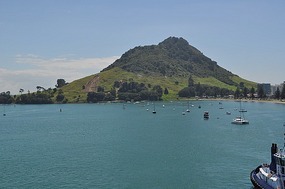

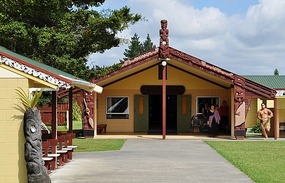
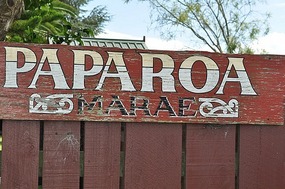
















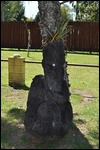
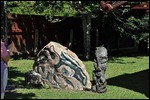
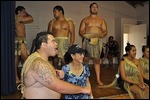
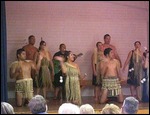
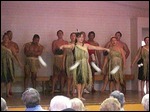
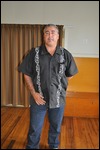
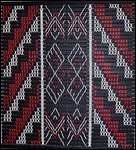
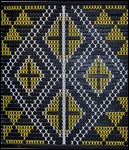
Marty
2011-02-17
So, why were they sticking their tongues out at you?
I can see you are still having fun! You will have to plan an Around the World in...110(?) Days story telling party!
mtbrown
2011-02-18
Sticking out the tongue is the Maori signal of aggression -- it not only issues a challenge, but shows how tough they are (the farther out they can stick it, the meaner and rougher they are!) I have a video of the whole display, and it includes some pretty aggressive moves with that spear, but the tongue keeps coming out at the really intense moments....